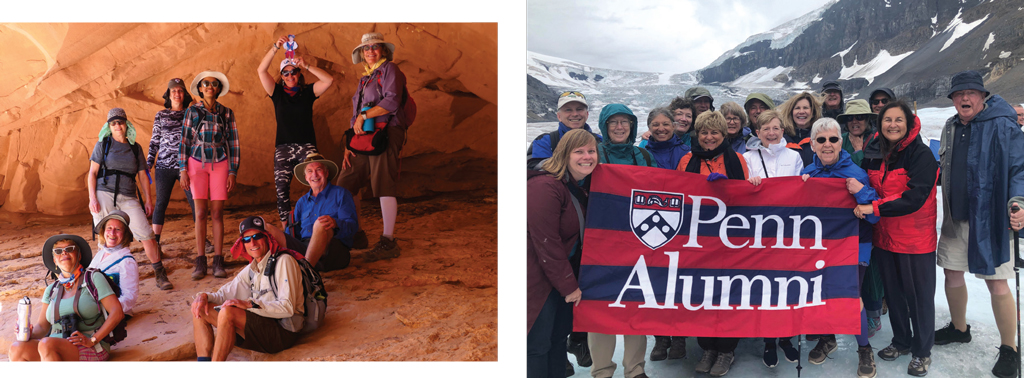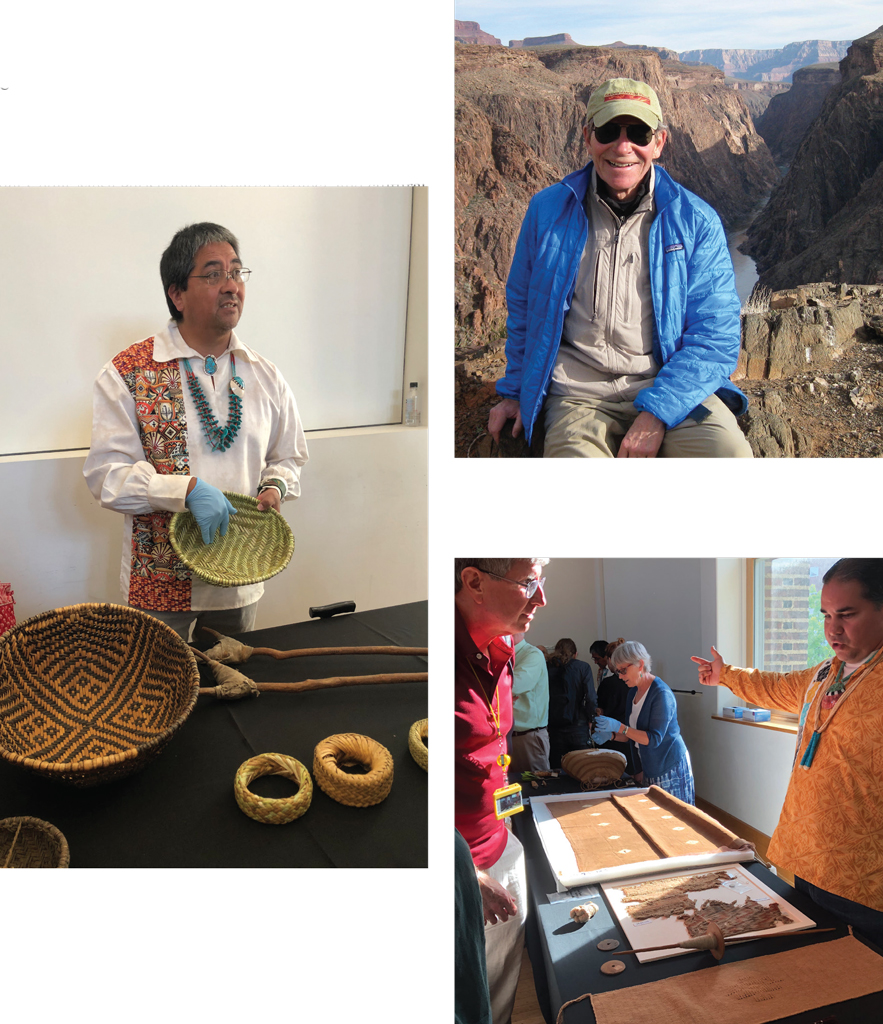
Museum Welcomes New Overseers
The Penn Museum is delighted to welcome three new Overseers in fall 2019.
As an Anthropology major at Penn, ERICA DESAI, C96, spent countless hours at the Museum in its classrooms, among the collections, and working with professors. Her education in medical anthropology and population health inspired a career in health care and public health in which she worked for over ten years. Most recently she was the Program Director for the Take Care New York initiative at the New York City Department of Health and Mental Hygiene, where she was responsible for the development and implementation of this city- wide health policy framework. Additionally, Erica also served as the Acting Chief of Staff to the Commissioner of Health. Prior to working at the Health Department, Erica worked in the Physician-in-Chief’s office at Memorial Sloan Kettering Cancer Center, where she was responsible for a wide range of special projects affecting hospital operations and policy. Erica is currently involved with a number of nonprofit organizations including the Abaarso School of Science and Technology, a boarding school in Somalia, and she is a trustee for the Madison Square Park Conservancy and the Spence School. Erica lives in Manhattan with her husband, Anand, W96, C96, and their two children, Ella, age 12, and Asher, age 10. Erica is thrilled to reconnect with the work of the Museum at this exciting time.
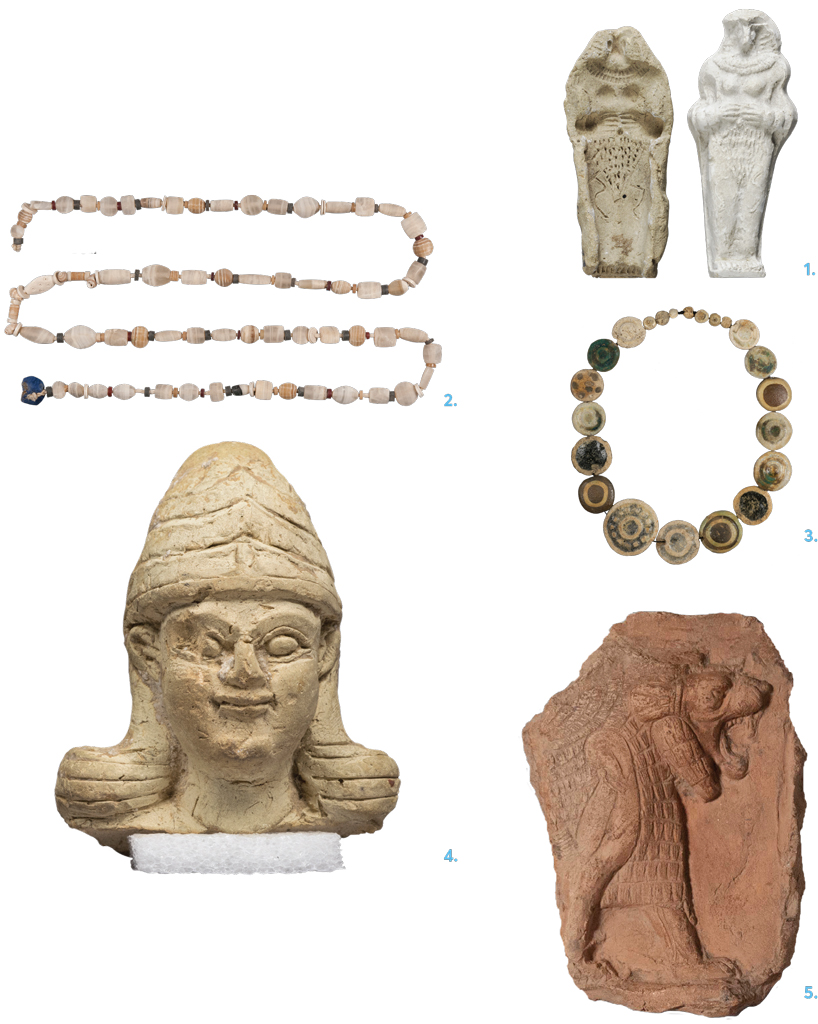
IRFAN M. FURNITUREWALA, WG01, PAR, is a partner and U.S. equity portfolio manager at Capital Group, a global investment firm that manages over $1.6 trillion in assets. Prior to joining Capital, Irfan was a design engineer at Motorola, where he co-invented two patents approved by the United States Patent and Trademark Office. He holds an MBA from the Wharton School, a Master’s degree in Electrical Engineering from Iowa State University, and a Bachelor’s degree in Electronics Engineering from University of Mumbai in India. Irfan and his wife Asma live in Los Angeles with their four sons. Besides being an alumni interviewer for Wharton and for Penn, Irfan has also been a member of Penn’s Major Gifts Giving Council and Penn’s Parent Leadership Council. In addition to being an engaged Penn alumnus, Irfan has been on the board of the Greater Los Angeles Zoo Association, the Mirman School, and “I Have a Dream” Los Angeles.
GEORGE W. GEPHART, JR., WG79, PAR, is the former President and CEO of the Academy of Natural Sciences. During his seven-year tenure, he orchestrated its successful combination with Drexel University. George also served on the Penn Museum Advisory Board for much of this time. Prior to his service at the Academy, he spent 25 years in the investment management business in New York and Philadelphia. George also served on the boards of several Philadelphia non-profits including Main Line Health, The Jefferson Health System, The Curtis Institute of Music, and Natural Lands Trust. George and his wife Elizabeth “Pooh” Gephart, CGS79, PAR, have two daughters and currently reside in Charleston, SC. There, he is on the board of the Medical University of South Carolina Foundation.
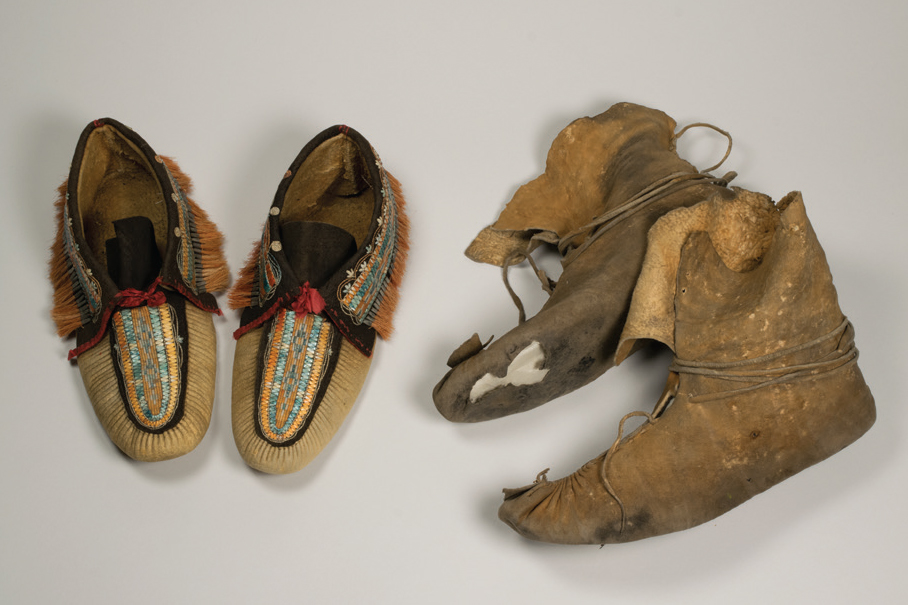
New Light on Ancestral Pueblo Perishables
ON JUNE 27, the First Annual Rick Rockwell Lecture brought 2,000-year-old sandals, feather blankets, hide and cotton clothing, baskets, and atlatls from Southeast Utah in the Museum’s American collections together in conversation with today’s leading Native American specialists. Highlighting continuities through time, archaeologist Dr. Laurie Webster of Colorado introduced her Cedar Mesa Perishables research project, and cultural specialists Chris Lewis (Zuni Pueblo) and Louis Garcia (Tiwa/Piro of Albuquerque) spoke eloquently about the joys of discovering unfamiliar weaving techniques once used by their ancestors through object-based research at the Penn Museum.
Museum Objects Travel to New York City
THE PENN MUSEUM has an active loan program to institutions in the United States and abroad. Below is a selection of objects recently loaned to the Institute for the Study of the Ancient World in New York for their exhibition A Wonder to Behold: Craftsmanship and the Creation of Babylon’s Ishtar Gate. The exhibition runs from November 6, 2019 to May 24, 2020, and will include 25 Near Eastern and 2 Babylonian Section objects from the Museum’s collection.
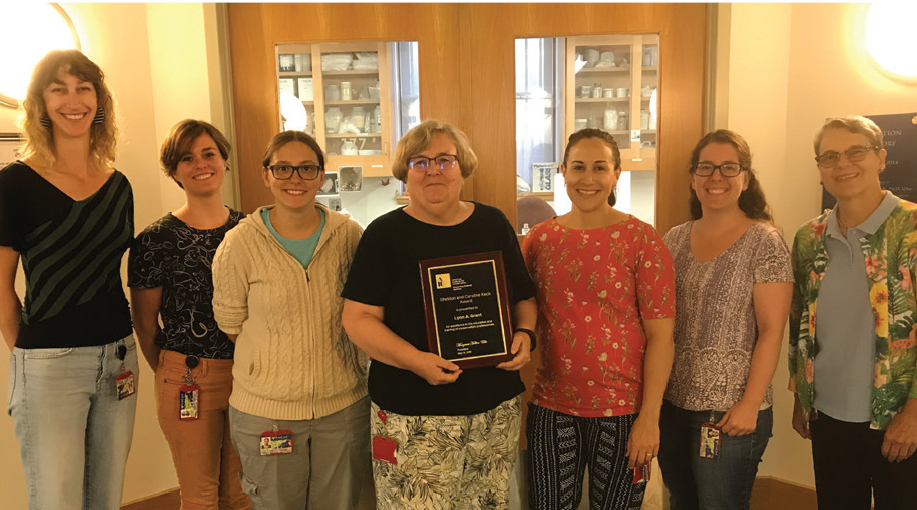
Foundation Grants Support Museum
THE MUSEUM is honored to have received several recent foundation grants that advance our building transformation, research, and learning programs. A grant from the Otto Haas Charitable Trust is supporting our reopening this fall when we will welcome visitors to our new galleries and renovated spaces.
A new grant from the Areté Foundation is supporting the Museum’s excavations at Gordion, Turkey, one of the most significant archaeological sites in the Near East and our longest continually running excavation. The Areté Foundation’s grant provides funding for excavation and site conservation over the coming years as our researchers continue to make new discoveries about this historically important place in the ancient world.
Grants from GRoW @ Annenberg, Giorgi Family Foundation, and the Walter J. Miller Trust are helping us continue our impactful Unpacking the Past program for Philadelphia middle school students. GRoW @ Annenberg helped us launch the program five years ago through a generous lead grant. Their renewed support enabled us to purchase two eye-catching Mummy Mobiles for our educators to drive to schools across the city to teach outreach lessons in classrooms.
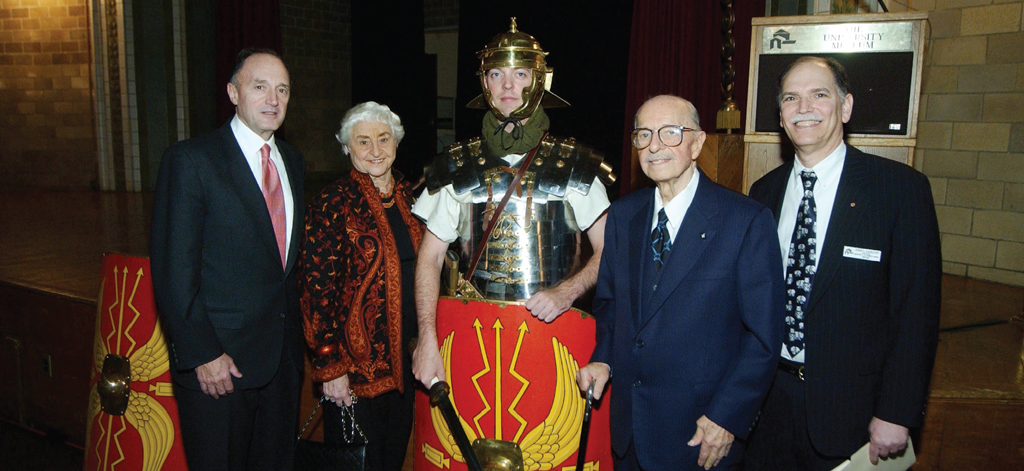
Walk Softly on this Earth
MOCCASINS in the Penn Museum’s collection tell many different stories, some familiar, some lost, others often hushed and uncomfortable. Beginning in the 1500s, millions of Native Peoples perished as waves of Spanish, French, English, Dutch, Portuguese, Scottish, and Swedish colonists settled across the land. In time, the U.S. government imposed brutal policies of annihilation and removal and attempted to “civilize” Native Peoples on confined reservations. Indigenous descendants actively remember these years as a time of suffering.
The Judith Rodin and Paul Verkuil Gallery, a new space adjacent to the Sphinx Gallery for the display of featured objects that will rotate frequently, contains two pairs of moccasins with special stories. The Seminole moccasins shown here, worn over many miles on the Southeastern homeland, bear silent witness to warfare, disease, starvation, forced labor, broken treaties, stolen lands, segregation, and desecration.
But Native Peoples were not simply victims. As is still true today, they drew on their strength and their histories, and using their strategic and diplomatic skills made choices to assure survival and shape the lives of future generations. The Huron-Wendat moccasins tell stories of adaptation and resilience. Their 19th-century maker chose her materials carefully, which retain the life forces of moose, deer, and porcupine. She added culturally meaningful geometric and plant motifs to honor and protect the wearer, likely a family member or a British supporter, as he navigated the complex physical and social terrains. Like her, Indigenous politicians, healers, mothers, artists, and intellectuals allied and protected themselves through the changing times.
The Penn Museum respectfully acknowledges that it is situated on Lenapehoking, the ancestral and spiritual homeland of the Unami Lenape.
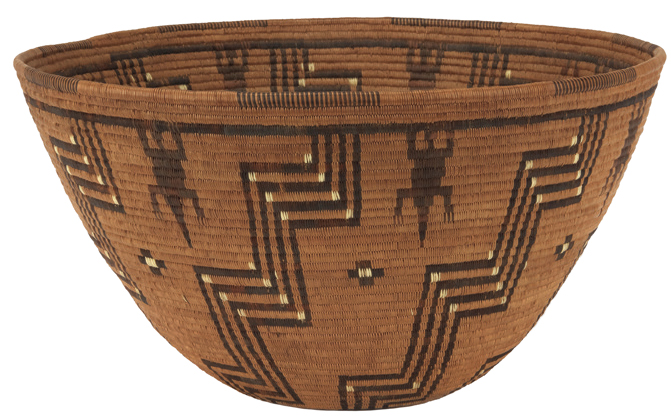
Conservators Attend May 2019 AIC Meeting in Connecticut
SEVEN CONSERVATORS from the Penn Museum attended the Annual Meeting of the American Institute for Conservation in May 2019. Molly Gleeson, Julie Lawson, Jessica Byler, Alexis North, and Anna O’Neill presented papers. Head Conservator Lynn Grant received (in absentia) the Sheldon and Caroline Keck Award for excellence in the education and training of conservation professionals.
Remembering a Devoted Overseer and Volunteer
THE PENN MUSEUM mourns the loss of former Overseer and longtime volunteer Josephine (Josie) Arader Hueber, CW47, on July 7, 2019. An exceptionally dedicated member of the Women’s Committee through several decades, Josie organized many of that group’s most notable trips to archaeological sites, and she led the acclaimed celebrity book and exhibition project 44 Eyes in a Museum Storeroom (2000). A beloved friend of the Mediterranean Section, she served as Board liaison for the Etruscan and Roman galleries project and was an indispensable member of the team. She was a guiding force in fundraising for the two new galleries, opened in 1998, especially for the Rome Gallery, named in honor of Andrew W. Farnese. As chair of the Etruscan and Rome Galleries opening gala, she helped organize the events for the enormously successful public opening of the new galleries—one of the most memorable events in the Penn Museum’s history. The Penn Museum is richer for the extraordinary legacy of Josie’s work on so many of its programs and projects.
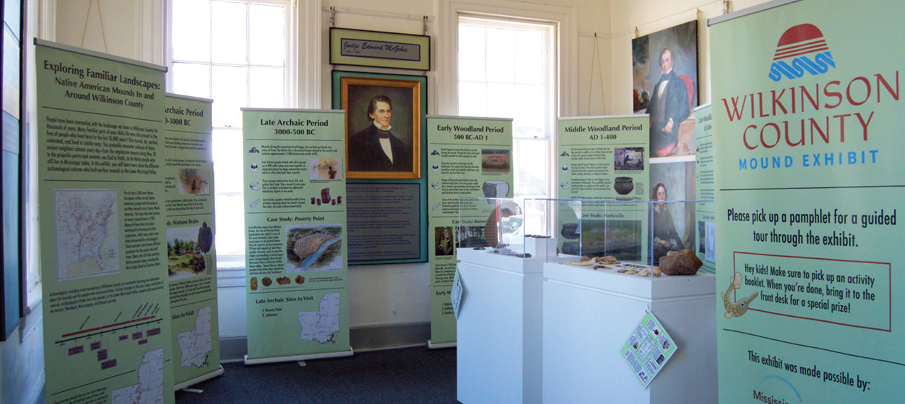
Native American Voices Rotates Objects
THIS WINTER, 50 objects will rotate on display in Native American Voices—The People Here and Now, which is extended to 2021. Among them is this exquisite Timbisha Shoshone basket from Death Valley, California, coiled ca. 1890 of willow, black devil’s claw, and white bird quill.
Curator and Students Work With Mississippi Museum
DURING THE SUMMER 2019 SEASON of the Smith Creek Archaeological Project, Dr. Megan Kassabaum, Weingarten Assistant Curator in the American Section, and two student curators, Arielle Pierson and Erin Spicola, worked with the Woodville Main Street Association to open an exhibition in the Wilkinson County Museum in downtown Woodville, Mississippi. The exhibition, entitled Exploring Familiar Landscapes: Native American Mounds in Wilkinson County, focuses on the precontact moundbuilding cultures that thrived in the American South from 6000 BCE to European contact. It features Native American artifacts from the local area and displays two pots that were replicated by a modern potter using sherds excavated by the Smith Creek Archaeological Project. Located between Natchez, MS, and Baton Rouge, LA, the Woodville exhibition will remain open for three years.
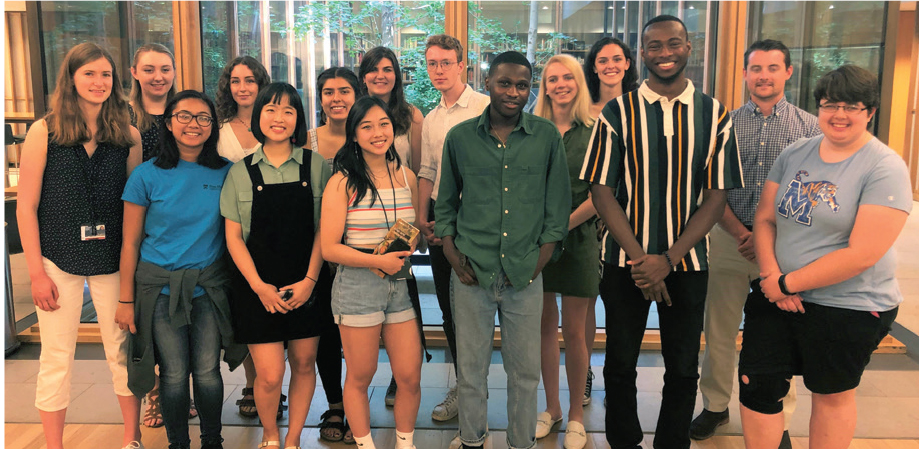
Summer Internship Program Offers Diversity Stipend
DIVERSIFYING THE MUSEUM FIELD is a conversation that has increased exponentially in recent years. With equity and inclusion in mind, the Penn Museum offered a Diversity Stipend for the 2019 Summer Internship Program. Three students from underrepresented groups in the museum field were paid a stipend for a 300-hour internship, which included the cost of travel and summer housing.
Twenty-seven college and recent graduate interns were placed across sixteen Museum departments for eight to ten weeks, working with and learning from museum professionals. Several interns worked in curatorial sections learning about collections research; others worked on exhibitions preparing for the upcoming Africa and Mexico and Central America Galleries; one was an editorial intern working on this issue of Expedition. During their internship, interns participated in a Museum Practice Program comprised of weekly lectures and tours about the Penn Museum’s collections, exhibitions, and programs led by Museum staff and curators.
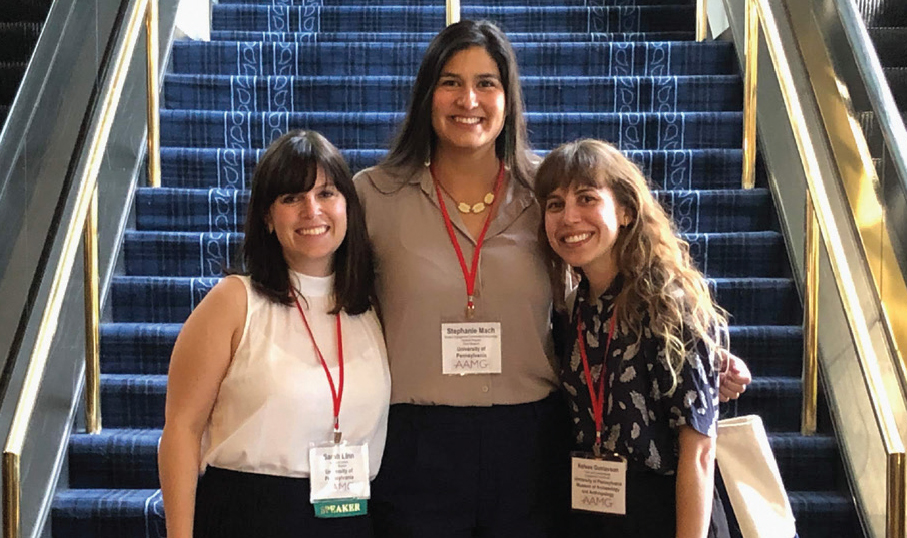
Staff Members Take Part in AAMG Conference
IN JUNE 2019, four members of the Museum’s Academic Engagement Department attended the Annual Conference of the Association of Academic Museums and Galleries (AAMG) in Minneapolis, MN. The three-day conference provided staff a chance to learn how other campus museums and galleries connect with their student and local communities and the opportunity to share some of their work at the Penn Museum. Kelsea Gustavson, Teen and Undergraduate Engagement Coordinator, presented “Making Workshops,” which gives Penn students a chance to learn how Museum objects were made and used through hands-on, experiential workshops. Dr. Sarah Linn, Research Liaison, moderated a panel about the role that student gallery guide programs play in connecting students with one another, the Museum, and the public. Stephanie Mach, Academic Engagement Coordinator, moderated a panel about university museums as agents for decolonization on campus through campus and course partnerships.
Penn Alumni Travel Tours
IN JUNE, American Section Associate Curator Dr.Lucy Fowler Williams and ten Penn alumni hiked the extraordinary terrain of Zion, Bryce Canyon, Capitol Reef, Canyonlands, and Arches National Parks in Southeast Utah. Lucy shared lectures on Ancestral Pueblo and Navajo peoples whose histories tie them to this rugged landscape. The eight-day trip was sponsored by Penn Alumni Travel and World Wide Trekking.
During July and August, Weingarten Assistant Curator Dr. Megan Kassabaum served as faculty host for Penn Alumni Travel’s Canadian Rockies Explorer tour. In addition to visiting a variety of important archaeological sites, the group had the opportunity to stand atop the Athabaska Glacier, a small part of the huge Columbia Icefield located in Jasper National Park.
